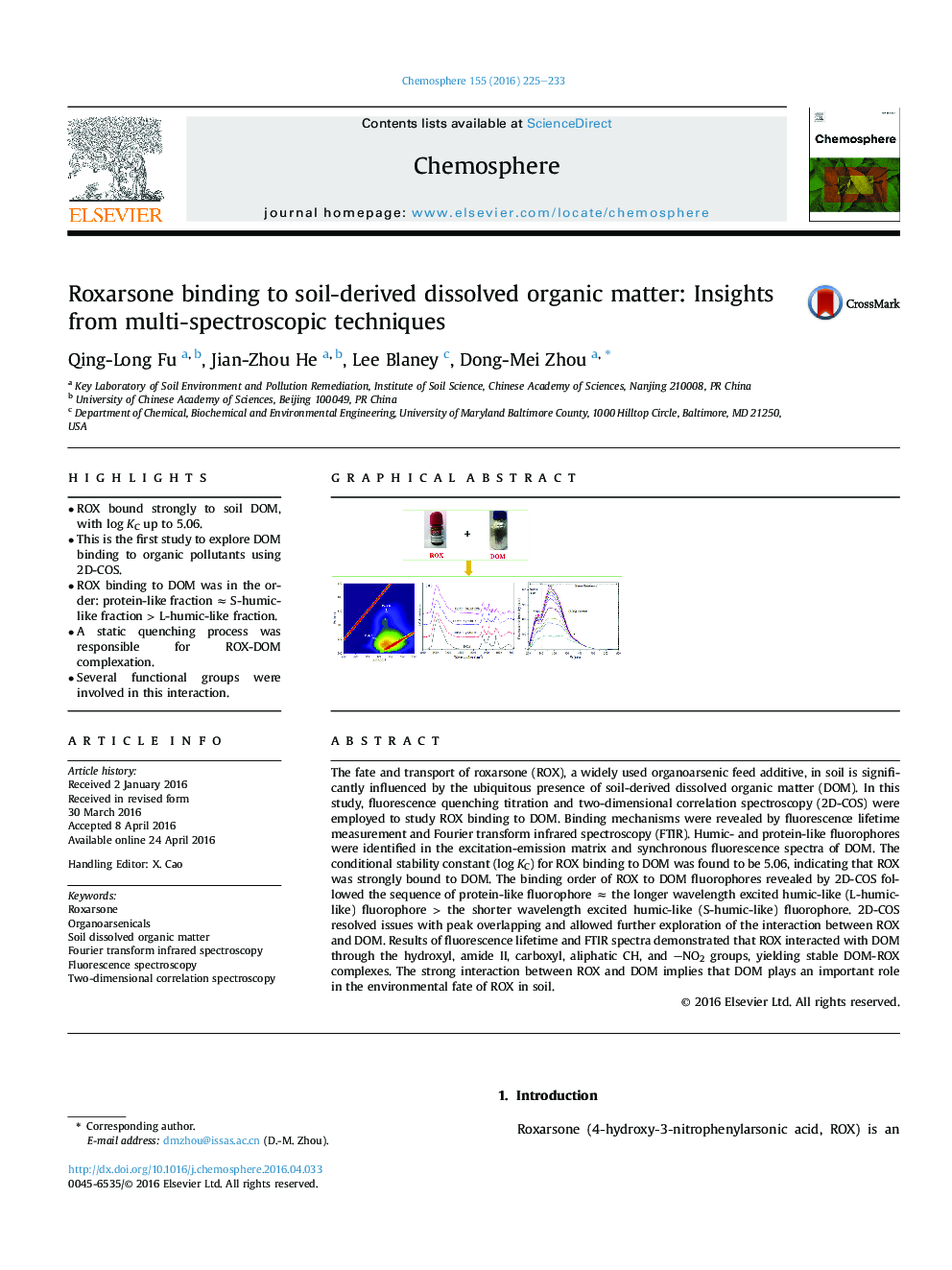| کد مقاله | کد نشریه | سال انتشار | مقاله انگلیسی | نسخه تمام متن |
|---|---|---|---|---|
| 4407494 | 1618816 | 2016 | 9 صفحه PDF | دانلود رایگان |

• ROX bound strongly to soil DOM, with log KC up to 5.06.
• This is the first study to explore DOM binding to organic pollutants using 2D-COS.
• ROX binding to DOM was in the order: protein-like fraction ≈ S-humic-like fraction > L-humic-like fraction.
• A static quenching process was responsible for ROX-DOM complexation.
• Several functional groups were involved in this interaction.
The fate and transport of roxarsone (ROX), a widely used organoarsenic feed additive, in soil is significantly influenced by the ubiquitous presence of soil-derived dissolved organic matter (DOM). In this study, fluorescence quenching titration and two-dimensional correlation spectroscopy (2D-COS) were employed to study ROX binding to DOM. Binding mechanisms were revealed by fluorescence lifetime measurement and Fourier transform infrared spectroscopy (FTIR). Humic- and protein-like fluorophores were identified in the excitation-emission matrix and synchronous fluorescence spectra of DOM. The conditional stability constant (log KC) for ROX binding to DOM was found to be 5.06, indicating that ROX was strongly bound to DOM. The binding order of ROX to DOM fluorophores revealed by 2D-COS followed the sequence of protein-like fluorophore ≈ the longer wavelength excited humic-like (L-humic-like) fluorophore > the shorter wavelength excited humic-like (S-humic-like) fluorophore. 2D-COS resolved issues with peak overlapping and allowed further exploration of the interaction between ROX and DOM. Results of fluorescence lifetime and FTIR spectra demonstrated that ROX interacted with DOM through the hydroxyl, amide II, carboxyl, aliphatic CH, and NO2 groups, yielding stable DOM-ROX complexes. The strong interaction between ROX and DOM implies that DOM plays an important role in the environmental fate of ROX in soil.
Figure optionsDownload as PowerPoint slide
Journal: Chemosphere - Volume 155, July 2016, Pages 225–233